-
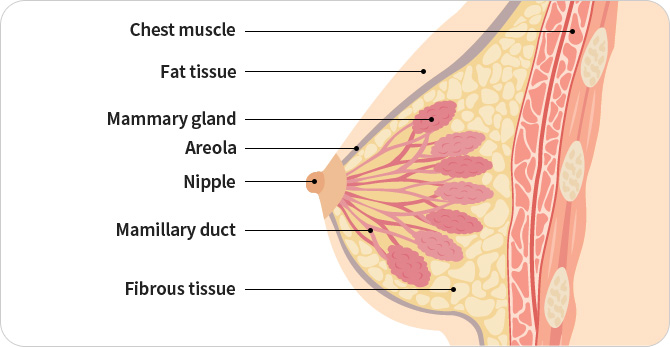
Breast is a coupled organ located in upper part of pectoralis major m.
It consists of skin that surrounds breast, subcutaneous fat, nipple, areola, mamillary duct, mamillary gland, and lobule. It secrets milk and is a icon of femininity that completes body curve of a women
 Home
Home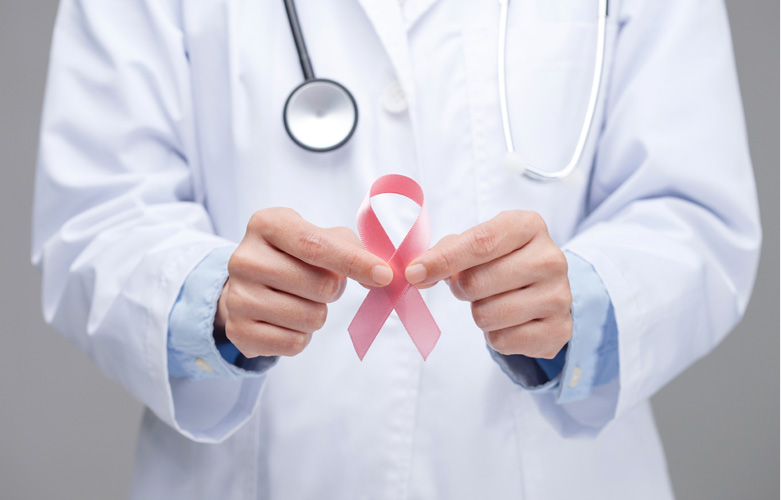
- Breast
- It is important to find breast cancer with periodic checkup before symptoms set in.
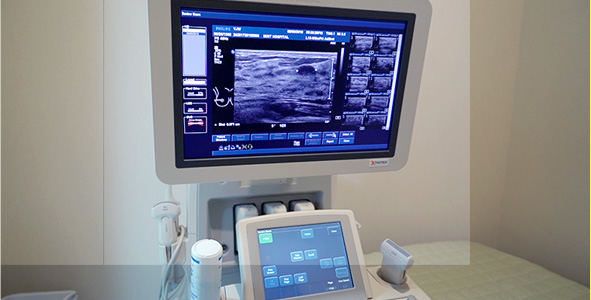
-
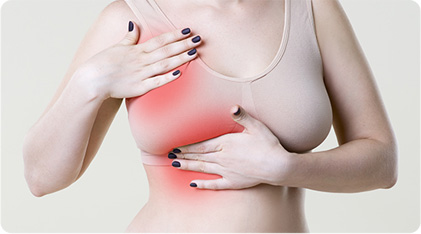
Breast pain
It is one of the most common symptoms in breast disease and is mostly common in female in her 40s and 50s before menopause.
It is further classified into periodic pain according to menstruation and non-periodic pain that is irrelevant to menstruation.
Pain from breast cancer is non-periodic, and the most characteristic feature is that it is ipsilateral, not bilateral. Breast pain irrelevant to breast cancer can be managed pain with hormonal treatment.
-
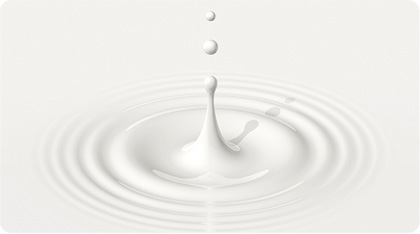
Nipple discharge
It is studied if it is normal or pathologic based on if it is ipsilateral or bilateral and its color and amount.
Mostly, it is due to physiological cause or drug, but if it is due to tumor (benign or malignant), it needs to be treated. -
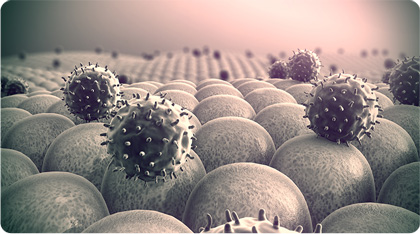
Breast inflammation
It is classified into lactation mastitis and non-lactation mastitis and most are caused by bacterial infection. Bacteria may grow in breast milk trapped in narrowed or obstructed mamillary duct where breast milk passes or wound at nipple from breastfeeding may allow infiltration of bacteria.
If it gets worse, it may develop into inverted nipple.
Medication such as anti-inflammatory drug or antibiotics are used. -

Breast mass
90% of breast mass is benign, not malignant. There are fibroadenoma, intraductal papilloma, benign phyllodes tumor, and fibrocystic disease. Since proliferative nodule increases in size consistently, it may be considered of removal, whereas non-proliferative nodule does not need a special treatment, but just follow-up.
- Fibroadenoma: It is the most common benign tumor among breast tumors and is caused by abnormal growth of fibrous tissue and epithelial tissue. Mostly, it is 1~2cm in diameter, has clear margin, is elastic, and has no pressure pain.
- Phyllodes tumor: It is different from fibroadenoma and is mostly benign. It is mostly 3~4cm in diameter and has a shape like a fallen leaf, which gives its name ‘phyllodes’. It is a painless lump with clear margin and many nodules
- Intraductal papilloma: It is a lump within mammillary duct and can accompany bloody nipple discharge. It is classified into single intraductal papilloma and multiple peripheral papilloma. If it has atypical cells, it can progress into breast cancer, so surgical treatment is performed.
- Fibrocystic disease: It can cause pain as mammillary gland and fibrous tissue enlarges due to female hormone. The symptoms may aggravate around menopause. It can be left untreated, but it can be treated with medication or removed with procedure, depending on the situation.
-

Accessory breast
Any person has his/her mamillary gland from umbilicus to armpit, which allows an extra breast to develop. This is called accessory breast. It does not cause specific symptoms, but it you want it gone due to pain or aesthetic problem, it may be removed with resection or liposuction.
1st common among
3 major female cancers, breast cancer
-
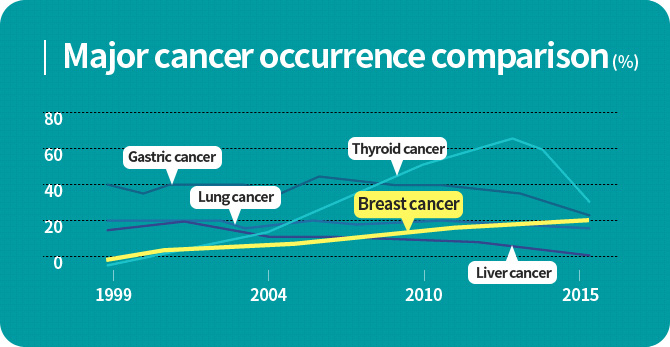
It is malignant tumor that occurs in mamillary duct where breast milk passes or lobules where breast milks are made.
Symptoms like breast deformation, breast mass, nipple discharge and inversion,and armpit mass develop. Patients diagnosed with cancer was 124,467 in 2012 and 171,992 in 2016, increasing about 40%. The increase rate in Korea is the top amongst OECD members. Also, breast cancer has high recurrence and metastasis, so it is important to find it early with self-check or examination from a specialist before it becomes worse.
Stages of breast cancer
Treatment process and result differ depending on whether the breast cancer is found at early stage from periodic checkup or after symptoms develop. Faster the diagnosis and treatment are, better the complete remission, survival, and breast preservation are. Therefore periodic examination is important.
-
- Stage 0.
-
- Non-invasive breast cancer (intraepithelial cancer)
-
Survival rate
98.3%
-
- Stage 1.
-
- No metastasis to lymph nodes and other tissues with size less than 2cm.
-
Survival rate
96.6%
-
- Stage 2.
-
- Size 2~5cm, with moderate lymph node metastasis
- Size larger than 5cm with no lymph node metastasis
-
Survival rate
91.8%
-
- Stage 3.
-
- Size less than 5cm but with severe lymph node metastasis
- Size 5cm or larger with lymph node metastasis
-
Survival rate
75.8%
-
- Stage 4.
-
- Metastasis to other organs including lung, bone, and liver. Reference: Korean Breast Cancer Foundation
-
Survival rate
34.0%
▲ Reference : Korea Breast Health Foundation
Breast cancer in Korea
-
- Every 100,000
-
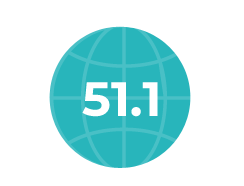
-
- Among
OECD members -
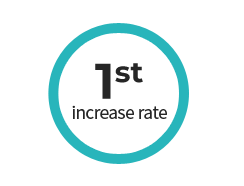
- Among
-
- The most common among 3 major female cancers
-
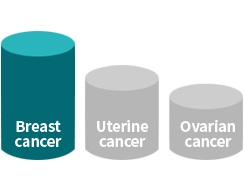
-
- Age
-
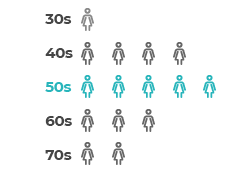
-
- Men are of
total patients -

- Men are of
▲ Reference: 2017 Health Insurance Review & Assessment Service data
The cause of breast cancer is not clearly established, but it is known to be deeply related to exposure to female hormone (estrogen).
Therefore, early menarche, late menopause, or no experience of labor or breastfeeding increase the risk of breast cancer.
5~10% of overall breast cancer cases are caused by genetics, and mutation in BRCA1·BRCA2 is known to be the cause of breast cancer
-
 Western diet
Western diet
-
 Early menarche
Early menarche
-
 Late menopause
Late menopause
-
 Drinking
Drinking
-
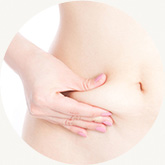 Obesity
Obesity
-
 Heredity / family history
Heredity / family history
-
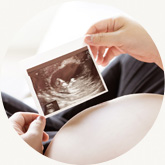 Miscarriage
Miscarriage
-
 Stress
Stress
-
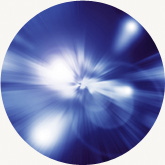 Radiation exposure
Radiation exposure
Breast cancer high-risk group Check List
- Those with family history of breast cancer among their siblings or mother
- Obese, or those who consume excessive animal fat
- Early menarche or late menopause
- Those with history of ovarian cancer, endometrial cancer, or colon cancer
- Childbirth after 30 or no childbirth at all
- Those with history of radiation therapy on chest due to lymphoma, etc.
- No breastfeeding
- Those with history of breast cancer
- Those with lesions like atypical proliferation
- Long use of oral contraception pill
- Those confirmed of BRCA1, BRCA2 mutation
- Long hormonal therapy after menopause
- Those in age 50 or older
- Frequent drinking
About 70% of breast cancer patients are known to have palpable lump (mass, lump) and it must be tested of malignancy from biopsy.
Otherwise, there are symptoms of secretion, breast pain, and breast deformation, but it is not so different from symptoms of general breast disease, so further tests are required.
20% of the cases are found from periodic medical check-up without specific symptoms.
-
Breast mass (lump), nipple discharge, breast pain,
breast deformation, eczema, nipple inversion,
mastitis, armpit mass - +
-
No symptom
| Age | Age 30 and up | 35 and up | 40 and up | High risk group |
|---|---|---|---|---|
| Test interval | Monthly | 2 years | 1~2 years | Occasional |
| Method | Self-check | Clinical examination by a doctor | Clinical evaluation and mammogram | Consultation with doctor |
Self-check is performed when breast gets soft for 4~7 days after period or 1st or the last day of the month after menopause.
If you feel a hard lump, different breast size, nipple discharge, and coarse skin in only one breast, you must see a doctor for further tests.
-
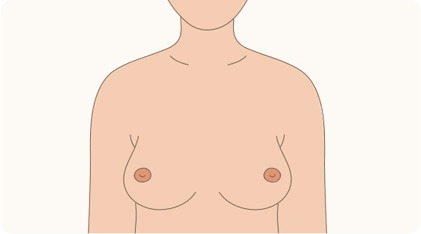
Observe your breasts with both your arms lowered down in front of a mirror after taking a shower.
See if your breasts are unsymmetrical, nipples are inverted, nipples have discharge, or skin is hard like a orange peel.
-
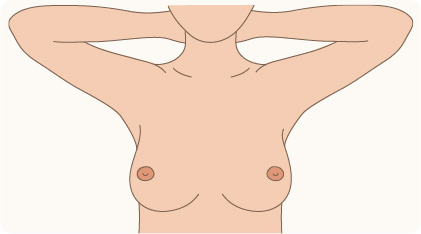
Observe your breasts again with your clasped hands on back of your head.
Observe your breasts while moving your body to left and right to see if nipples are located the same or if there is no dent in breast.
-
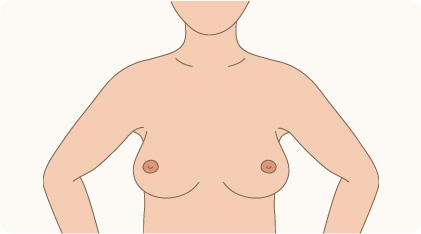
Breast is observed again with both hands on waist and shoulder and arms forward. Bend your body forward to see if your breasts move the same.
-
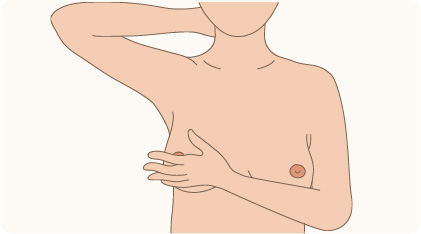
Raise one arm and place it at the back of your head, and gently press your breasts with three fingers of index, middle, and ring finger of the opposite hand in circle to see if there is lump.
Move little by little to the side until you check armpit (same for the other side)
-
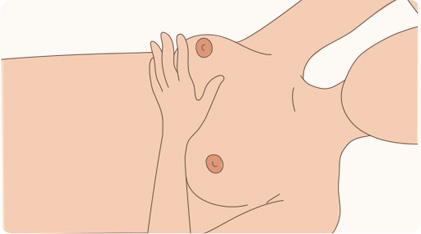
Lie on your side and perform the identical test as no. 4.When you put a towel underneath shoulder, the position is more comfortable.
(Same for the other side)
-

Pink ribbon campaign
In New York, 1991, breast cancer patients had hosted a running event for awareness of breast cancer. At the event, pink ribbon was given to the participants, which became the start of pink ribbon campaign. Afterward, every October became ‘Breast cancer prevention month’, and Pink Ribbon Campaign is held to promote monthly self-check and periodic hospital examination globally.Korea has been fully active in Pink Ribbon Campaign in the breast cancer-related foundations, companies, and hospitals since 2005.
Basic test for diagnosis of breast cancer is mammogram and ultrasound Most of Korea women has dense breast which is a breast with rich mamillary tissue rather than adipose tissue, so it is more practical to conduct mammogram and high-resolution breast ultrasound to find lesion. Therefore, it is better to perform the two tests result rather than performing only one test.
-
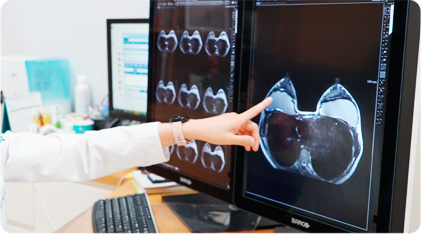
Interview
Breast radiologist will study your main symptom, history, family history, and lifestyle and conduct a consultation.
-
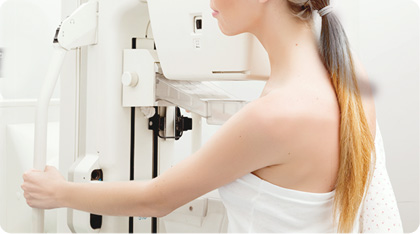
Mammogram(X-ray)
After compressing the breasts. Total of 2 X-ray images are shot in sagittal and transverse.
It is effective in finding micro-calcification.
It is included in tests over 40 among national cancer screening
-
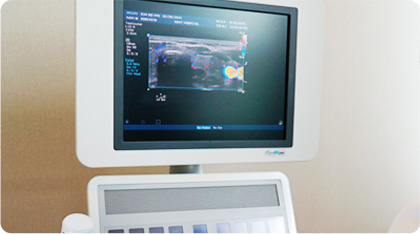
Breast ultrasound
It is high-resolution ultrasound that identifies lump, abscess, and cyst of breast It can study margin, a xillary, and deep locations that cannot be confirmed in mammogram.
-
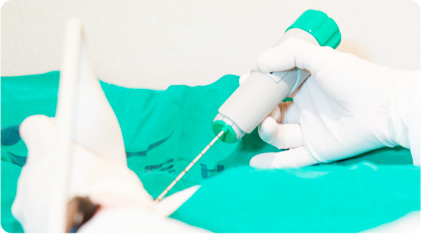
Breast biopsy (*if necessary)
It is to perform a test on a partial tumor with specially manufactured needle or equipment with the purpose of discerning benign and malignant tumor. There are fine needle aspiration, vacuum assisted breast biopsy (Mammotome), etc..
※ In case you are taking antithrombotic or anticoagulation drug like aspirin and warfarin, you must consult your doctor
-
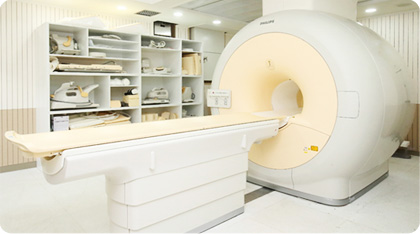
Breast MRI (*if necessary)
It is used when it is difficult to tell tumor from mammography or breast ultrasound or when confirming if preservative surgery is possible before the surgery. Also, it is conducted for differential diagnosis of lump after mammoplasty and follow-up after breast cancer surgery.
※ requires fasting for at least 4 hours.
What is BRCA gene which is so acclaimed to be related to breast cancer?
- BRCA1 and BRCA2 are genes located in long arm of chromosome 17 and 13, respectively.
Mutation of the gene in ovary and uterus as well as breast allows to detect any red flag for cancer.
If there is problem with DNA replication within breast or ovarian cell, abnormal protein synthesis affects cell cycle to induce tumor.
If it becomes malignant, it becomes cancer. Those with BRCA mutation has risk of breast cancer as much as 85%.
Therefore if you have breast cancer or ovarian cancer among your family, you must see if you have BRCA mutation with blood genetic test and manage your health with lifestyle and diet modification.
Candidates for BRCA gene test covered by health insurance
- Those who are diagnosed with breast cancer or ovarian cancer and have family history within their direct family (sibling)
- Those who have breast cancer and ovarian cancer at the same time
- Those with breast cancer, male breast cancer, bilateral breast cancer, and epithelial ovarian cancer diagnosed before 40.

Famous female Hollywood actor, Angelina Jolie, has inherited a gene with high risk of breast cancer and ovarian cancer from her mother.
Her grandmother and mother died of ovarian cancer, whereas her aunt died of breast cancer.
Gene study showed BRCA 1 mutation. The mutation has increased risk up to 87% and Angelina Jolie has had anticipatory breast and oophorectomy in 2013.
Angelina Jolie has announced a statement that stating the anticipated treatment as “My Medical Choice” on New York times, which made anticipated resection to become a global sensation. According to breast cancer status report from Korean Breast Cancer Society, The Angelina Effect has shown 3 times growth of preventive mastectomy.
However, it is unnecessary to blindly have preventive resection even if you have BRCA mutation.
As specialists have not reached an agreement on preventive resection, you need consultation with specialist who can check your health status and circumstance at once.
Opening Hours
-
Weekdays
- AM 8:30 - PM 5:30
-
Saturday
- AM 9:00 - PM 1:00
- service without lunch time
-
lunch time
- PM 12:30 - PM 1:30
Closed on Sunday & National Holidays.
Opening hours can vary for each medical staff, so please confirm before visiting our hospital
 KakaoTalk
KakaoTalk Blog
Blog Facebook
Facebook Instagram
Instagram YouTube
YouTube NaverTV
NaverTV Korean
Korean Chinese
Chinese Russian
Russian


 Reservation
Reservation







